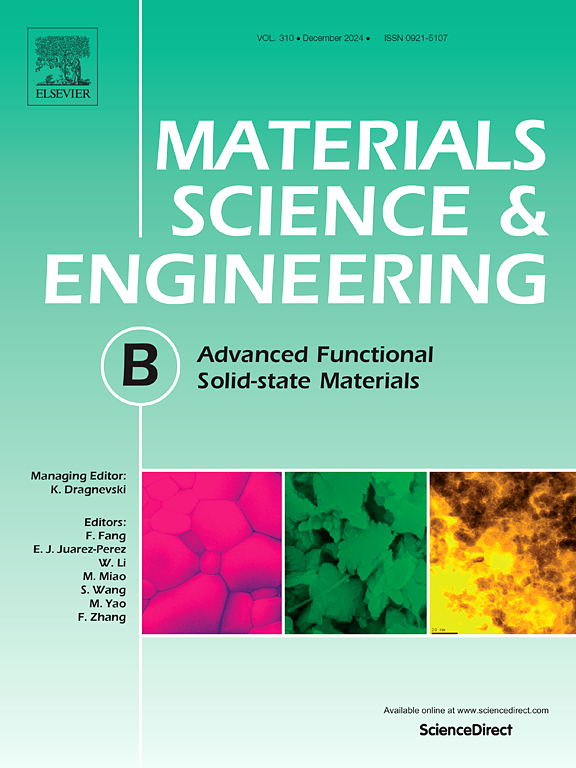Simultaneous incorporation of F- and Ce3+ ions into SnO2 lattice: A co-doping approach for enhanced photocatalytic dye detoxification
IF 4.6
3区 材料科学
Q2 MATERIALS SCIENCE, MULTIDISCIPLINARY
引用次数: 0
Abstract
Dye contamination in water bodies, primarily caused by industrial effluents, poses a major environmental concern due to the stability and toxicity of synthetic dyes. To address this challenge, the development of efficient photocatalytic materials capable of degrading organic dyes under light irradiation is essential. In this study, fluorine (F) and cerium (Ce) co-doped SnO2 nanomaterials were synthesized and systematically evaluated for their photocatalytic efficiency under both UV and visible light irradiation. The co-doping strategy significantly enhanced the photocatalytic activity by narrowing the band gap, improving visible light absorption, and promoting effective charge carrier separation. The F and Ce co-doped SnO2 nanomaterials achieved a high degradation efficiency of 94%, demonstrating their strong potential for practical wastewater treatment applications. These findings underline the effectiveness of co-doping in tuning the electronic structure and enhancing the photocatalytic performance of semiconductor materials, paving the way for sustainable environmental remediation technologies.
F-和Ce3+离子同时掺入SnO2晶格:一种增强光催化染料解毒的共掺杂方法
水体中的染料污染主要是由工业废水引起的,由于合成染料的稳定性和毒性,造成了一个重大的环境问题。为了解决这一挑战,开发能够在光照射下降解有机染料的高效光催化材料至关重要。在本研究中,合成了氟(F)和铈(Ce)共掺杂的SnO2纳米材料,并系统地评价了其在紫外和可见光照射下的光催化效率。共掺杂策略通过缩小带隙、提高可见光吸收、促进有效载流子分离等方式显著增强了光催化活性。F和Ce共掺杂SnO2纳米材料的降解效率高达94%,显示出其在实际废水处理中的应用潜力。这些发现强调了共掺杂在调整半导体材料的电子结构和光催化性能方面的有效性,为可持续的环境修复技术铺平了道路。
本文章由计算机程序翻译,如有差异,请以英文原文为准。
求助全文
约1分钟内获得全文
求助全文
来源期刊

Materials Science and Engineering: B
工程技术-材料科学:综合
CiteScore
5.60
自引率
2.80%
发文量
481
审稿时长
3.5 months
期刊介绍:
The journal provides an international medium for the publication of theoretical and experimental studies and reviews related to the electronic, electrochemical, ionic, magnetic, optical, and biosensing properties of solid state materials in bulk, thin film and particulate forms. Papers dealing with synthesis, processing, characterization, structure, physical properties and computational aspects of nano-crystalline, crystalline, amorphous and glassy forms of ceramics, semiconductors, layered insertion compounds, low-dimensional compounds and systems, fast-ion conductors, polymers and dielectrics are viewed as suitable for publication. Articles focused on nano-structured aspects of these advanced solid-state materials will also be considered suitable.
 求助内容:
求助内容: 应助结果提醒方式:
应助结果提醒方式:


